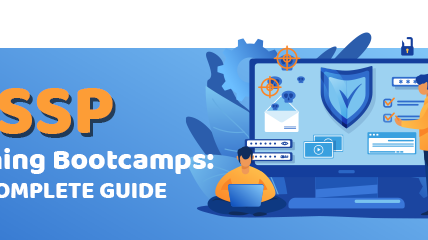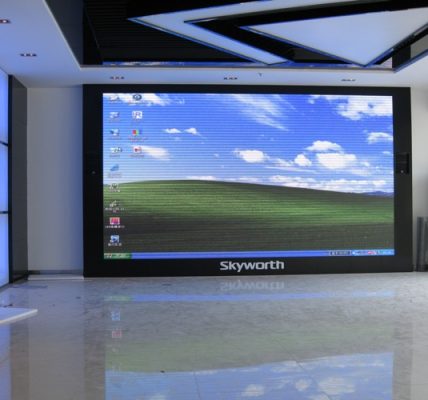GPS trackers are powerful software that allows you to pinpoint the precise location of vehicles, assets, or even people in real-time. It employs a network of satellites orbiting the Earth to provide accurate positioning data.
At its core, GPS tracking relies on small devices called receivers. These receivers communicate with satellites to determine their exact coordinates on a map. It continuously updates this information, helping GPS tracking systems monitor the movements and locations of whatever the receivers are attached to.
How Does GPS Tracking Software Work?
GPS tracking devices work by using signals from satellites to pinpoint locations with incredible accuracy.
-
Satellite Network Broadcasting
Up in space, there are 24 GPS satellites constantly orbiting the Earth. These satellites are steadily sending out radio signals in all directions. Contained within these signals is very precise data about the time and the exact position of each satellite.
-
Receiver Signal Collection
The GPS tracking devices, whether installed in vehicles, assets, or even smartphones, have receivers that can detect the signals from the GPS satellites. For an accurate location reading, the receiver needs to pick up signals from at least four different satellites.
-
Location Calculation Through Trilation
It is intelligent enough to analyze exactly when the signals from different satellites arrive at the receiver, the software can calculate how far away that receiver is from each satellite. With distance measurements from four satellites, the software can determine the exact geographic coordinates through a method called trilateration.
-
Continuous Real-Time Tracking
As the GPS receiver moves with the vehicle or asset, it repeatedly recalculates its position from the satellite signals, many times per second. This allows the tracking software to continuously update the location on a digital map display in real-time.
-
Data Processing and Analysis
Not just live location, but modern GPS tracking platforms process the data for deeper insights. They can monitor speeds, idling times, route efficiency, driver behavior patterns, and more. This processed data is then presented through user-friendly applications with mapping, reporting, and alert capabilities.
The combination of satellite positioning, signal calculation methods like trilateration, and modern data processing allows GPS tracking software to reliably and accurately follow assets or personnel virtually anywhere in the world. This powerful visibility provides operational intelligence for businesses and safety assurances for individuals.
Read Blog: How To Choose The Best GPS Tracking Software For Your Business
Types of GPS Trackers
GPS tracking software comes in different varieties to meet the needs of businesses and individuals. Here are some common types, explained in simple terms:
-
Cloud-Based Tracking
This software runs on servers located remotely (in the cloud) rather than your own computers. You can access it through a website or mobile app. Cloud solutions are flexible; you can scale up or down easily and get updates automatically. As long as you have an internet connection, you can check locations from anywhere.
-
On-Premises Tracking
With this option, the tracking software is installed directly on your company’s own servers or computers. You have full control over the software but need IT resources to maintain and update it yourself. This gives you more customization possibilities for your specific needs.
-
Mobile Apps
These GPS tracking apps run on smartphones and tablets, taking advantage of the device’s built-in GPS. They are a convenient, low-cost way for small businesses or individuals to track vehicles or assets. The app shows locations on a mobile-friendly map.
-
Integrated Solutions
Certain GPS tracking solutions such as TrackoBit integrate directly with other systems you may already use, like fleet management software or enterprise resource planning (ERP) tools. This integration provides a cohesive view of all your operational data in one place.
-
Personal Tracking
Not only for the fleet, but there are GPS tracking options for personal safety and monitoring family members. These often take the form of small wearable devices or smartphone apps that share location details with approved contacts.
The different types allow organizations and individuals to select the GPS tracking approach that fits their scale, existing technology infrastructure, mobile needs, and overall tracking objectives. operations.
Using Supported GPS Trackers and Devices for Fleet
The uses of GPS tracking are global and many organisations started implementing the same solutions for their exponential growth.
-
Fleet Management: Businesses with vehicle fleets, like delivery companies or transportation services, use GPS tracking to monitor their trucks and vans. Fleet managers can see where each vehicle is, its speed, and its route. This helps optimize routes, improve on-time performance, and ensure driver safety.
-
Asset Tracking: Companies with valuable equipment or inventory use GPS asset tracking. Construction firms can track heavy machinery across job sites. Rental businesses know where their assets are deployed. This prevents losses and improves utilization.
-
Vehicle Recovery: If a vehicle is stolen, built-in vehicle GPS tracking software helps authorities recover it quickly. The tracker leads them right to the vehicle’s current location for a higher chance of successful recovery.
What is the Future of GPS Tracking Devices?
The future of GPS tracking devices and software holds exciting potential that will transform fleet management and logistics operations. Here are some key advancements we can expect by 2024:
-
Hyper-Precise Location Tracking
GPS tracking will achieve incredibly accurate location data, pinpointing vehicles down to the exact meter and second. This hyper-precision will allow companies like Amazon to provide customers with delivery time estimates that are virtually exact, ensuring packages arrive at the promised moment.
-
Intelligent Route Optimization
Artificial intelligence (AI) and machine learning will make GPS software extraordinarily smart at route planning. By analyzing traffic patterns, weather data, and other factors, the software will recommend optimized routes that automatically adjust to avoid congestion or delays. This will save delivery fleets valuable time and fuel.
-
Prioritizing Driver Safety
Driver safety systems will integrate tightly with GPS tracking. Advanced driver-assistance systems (ADAS) can alert drivers to hazards, prevent speeding, and even take control temporarily in emergencies. Ride-sharing services like Uber could leverage this for an extremely safe experience.
-
Lightning-Fast Data Transmission
The rise of 5G and the Internet of Things (IoT) will enable GPS data to transmit at blazing speeds. Logistics companies can then track shipments across multiple modes of transportation—truck, air, and rail—without ever losing sight of the package’s precise location.
-
Unified Operational Views
GPS tracking will easily integrate with inventory management, customer service systems, and other operational platforms. This unification will automate processes and provide real-time updates across the entire supply chain. Retailers could automatically update online inventory the moment a delivery truck arrives.
Conclusive Thoughts!
The working process of GPS hardware devices is simple- GPS receivers get signals from satellites to calculate precise coordinates that GPS tracking software interprets and displays on a map or app. This gives users an easy way to visualize locations and movements in real-time from any internet-connected device.
Before 2023 ends, GPS trackers will become the must-have software for businesses requiring efficient logistics and transportation.
TrackoBit, with its hyper-accurate location data, intelligent routing, and geo-fencing, will completely change how we move goods and deliver services globally.



